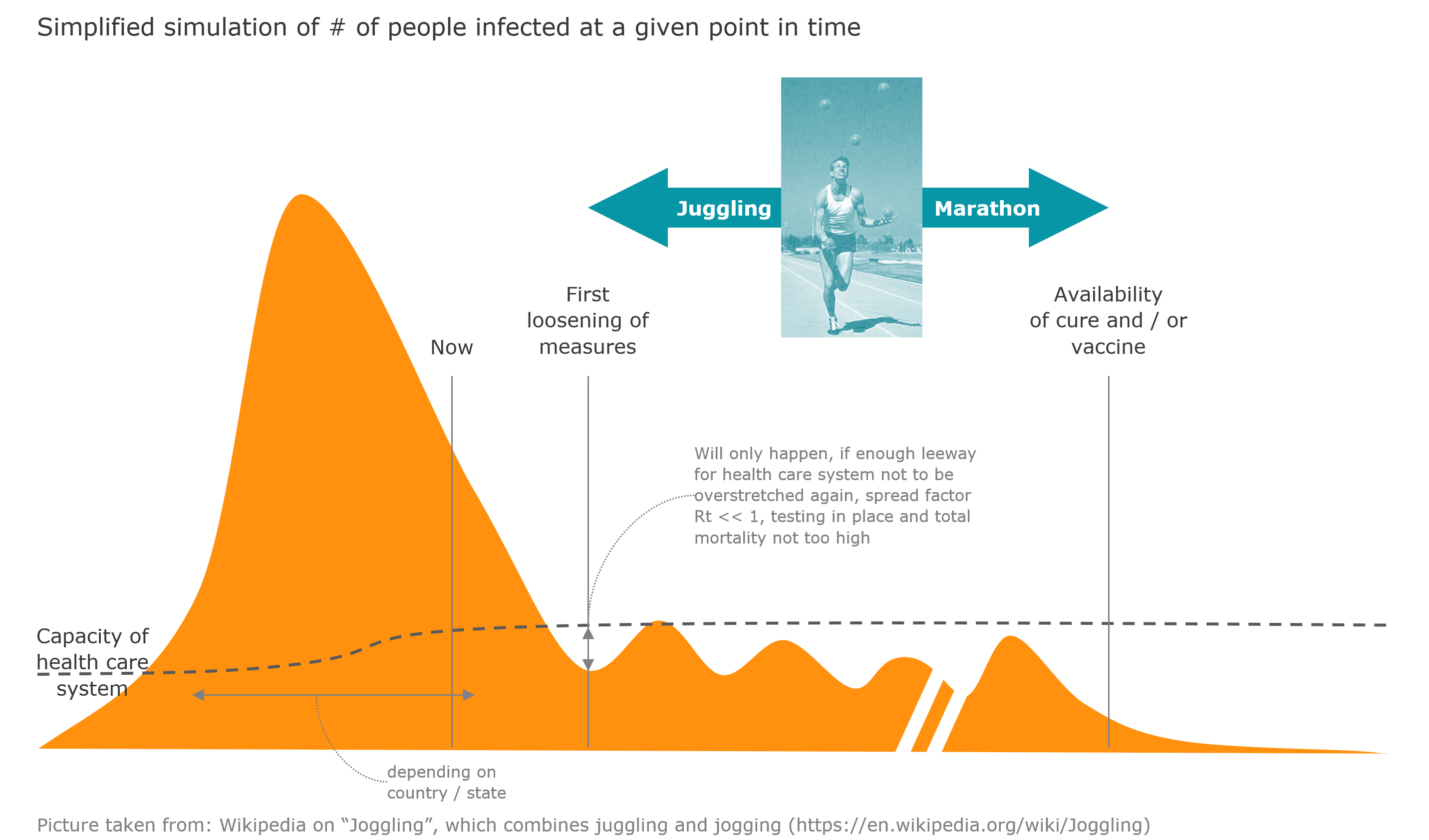While many countries and states are struggling with surging numbers of coronavirus cases, others are discussing when to "reopen" again.
Businesses around the world are working on their reopening plans and you can expect a publication on restart measures soon. But before we get there, let's work on answering a "simple" question: When will we reopen?
Let's be clear, there will not be one day on which we return to normal—at least not without a vaccine or cure. Tomas Pueyo described this very well in his "The hammer and the dance," though I feel that "dance" sounds a bit too joyful for what is ahead.
We will likely have a marathon ahead of us through which we will need to juggle quite a few topics while we run.

While most have understood by now, that every day that countries (and businesses) let pass before strong measures were implemented, increased the problem, we should also be clear that every day which we wait to reopen significantly reduces the problem. The exponential curve works both ways!
Since no one has experience, what the impact of loosening which measures will precisely be on the spread factor (Rt), there will be trial and error.
Talking of the spread factor, I wanted to share a simplified analogy: If the Rt was a car, traveling a speed of 1, the disease would spread at a constant speed, with the same number of new cases every day. But we want to hit the brakes and only an Rt significantly below 1 and declining, will produce the leeway for politicians to open up again:
Opening up too early carries the risk of a quick and overwhelming second wave. One could fear, that "May is the new March"—since in many countries we are just back at absolute values of new cases/day we saw earlier in the year.
Easing of containment measures MUST therefore come with strong testing and will only be possible when four parameters are met in a country, state, or region:
I can only encourage every business leader, to ask their best data scientists and analysts to build a model specific to their company, to understand, when the above criteria might be met in their region(s).
Data to model the impact is freely available on the net, the math behind this is well understood and combined with the deep knowledge of the respective sector, modeling of scenarios can be done.
Nobody obviously has the famous crystal ball, so my next publication will be around how to think in scenarios and how to restart businesses while running the juggling marathon.



